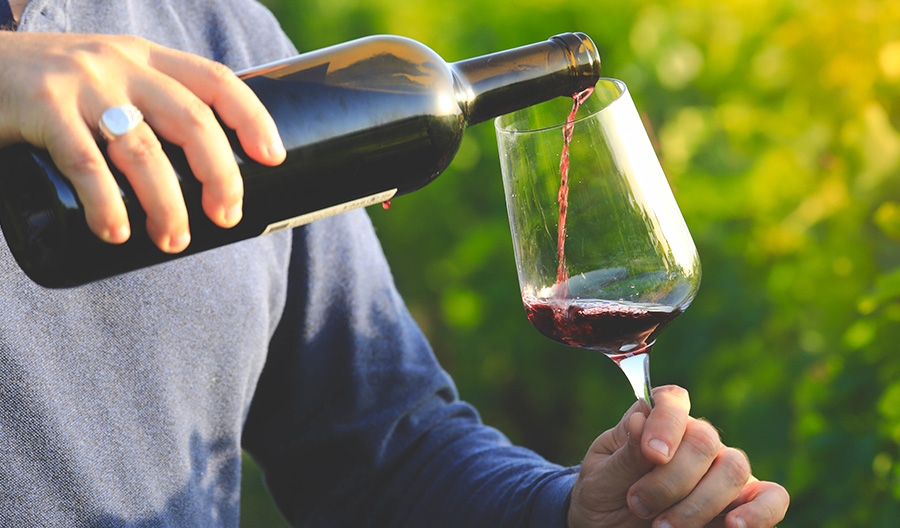Rioja, Spain, ranks among Old World wine regions: There’s Bordeaux, Burgundy and Alsace in France, Piedmont in Italy and Rioja in Spain. Rioja is a land of 1,000 wines. There is no such thing as typical Rioja, except that it must be made entirely or largely from Tempranillo.
Indeed, Tempranillo is the grape that fuels the Rioja Denominación de Origen Calificada (DOCa), Spain’s most historic and lauded wine region. It accounts for 88% of red grapes, and about three quarters of all grapes grown in the appellation.
While a number of Rioja reds are varietal Tempranillo, many of the region’s showcase wines adhere to traditional recipes and include small percentages of Garnacha (Grenache), Graciano and Mazuelo (Carignan).
The French taught Riojano winemakers how to grow better grapes and age wine properly in oak barrels, often for years prior to bottling. It can be light and easy, lush and deep, or elegant and ageworthy, proving that the region’s Tempranillo-based wines vary in style.
But that being said, Rioja doesn’t have a monopoly on the grape within Spain.
A few hours southwest, Tempranillo is also king in the Duero River Valley that’s home to the Denominacións de Origen (DOs) of Ribera del Duero and Toro. There, the weather is more extreme than in Rioja, the elevation much higher than it appears, and wines are made entirely from Tempranillo, often referred to locally as Tinto Fino or Tinta de Toro.
These wines are generally dark, potent and tannic, sometimes even fierce. To put it in boxing terms, if the best Tempranillos from Rioja are finely tuned middleweights, those from Ribera del Duero and Toro are punch-packing heavyweights.
And that’s the thing—there’s a Tempranillo for every taste. You just need to know where to look.

The Early Bird
Tempranillo draws its name from the Spanish word temprano, which means early. While not exactly an early ripener in the global sense, it matures faster on the vine than most other red grape varieties, like the aforementioned Garnacha, Graciano and Mazuelo.
The variety particularly excels in the north of Spain, where temperatures are fairly moderate, rivers flow in multiple directions and high elevations help keep the nights cool.
In Rioja, for example, the best Tempranillo vineyards are found in the Rioja Alta and Rioja Alavesa subzones, where soils are rich in limestone deposits and generally exceed 1,500 feet above sea level. The Sierra de Cantabria mountain range to the north and Sierra de la Demanda subrange to the south of the Ebro River create an ideal, valley-like atmosphere to cultivate top wine grapes.
While no one knows for sure how long Tempranillo has existed in Spain, the general belief is that the grape’s history in Iberia extends to the time of the Phoenicians.
Wines from Ribera del Duero and Toro are usually muscular and extracted, with the potential for high alcohol and powerful tannins.
It was during the 1800s, however, that the variety came to the fore in Rioja. During the worst of Europe’s phylloxera plague, many Bordeaux winemakers crossed the Pyrenees mountains to make wine in Spain, which had not yet been hit by the destructive vine louse.
The French taught Riojano winemakers how to grow better grapes and age wine properly in oak barrels, often for years prior to bottling. It was these new techniques that would eventually lead to Rioja’s now-familiar aging-based classifications: Crianza, Reserva and Gran Reserva.
These wines represent a quintessential Rioja style: refined wines of elegance, always based on Tempranillo. They also boast a healthy but integrated mix of spicy berry and plum aromas and flavors, bracing acidity, oak framing and the ability to improve for many years after bottling.
Brawn Over Finesse
The Duero River begins in the province of Soria in north-central Spain. It flows westward into Portugal before it joins with the Atlantic Ocean near the city of Oporto. Along the way, it provides the Ribera del Duero and Toro regions with vital water to nurture Tempranillo.
Wines from these regions are usually muscular and extracted, with the potential for high alcohol and powerful tannins. They’re intense creations with a lot of color, fruit, oak and raw power.
In eastern Ribera del Duero, near the town of Aranda del Duero, elevations can exceed 3,000 feet above sea level, while Tempranillo thrives above 2,000 feet in the heart of the region just to the east of Valladolid. In Toro, to the west of Valladolid, vineyards sit just below that threshold.
These heights translate into extreme growing conditions highlighted by long winters and short, hot summers—additional factors that contribute to the final intensity of the wines.
If you subscribe to the “go big or go home” mantra, the wines of Toro and Ribera del Duero are definitely for you.
Recent Tempranillo vintages in Spain
2017: A difficult year. Devastating April frosts in Rioja and the Duero Valley resulted in a massive reduction in yields. A dry, hot summer caused what did survive to be intense and tannic.
2016: An excellent vintage throughout Spain. Dry, sunny weather through harvest yielded outstanding raw materials.
2015: Very warm weather in Rioja and the Duero Valley resulted in superripe, fleshy wines. Not a classic vintage for long-term aging.
2014: Not a disaster, but not great. Rain and cool weather at harvest resulted in uneven ripeness and inconsistent quality across the country. Rot and mildew were also issues.
2013: Unusually cold and rainy conditions produced austere, acidic wines in both Rioja and the Duero Valley.
2012: A very good to excellent warm year that resulted in full-bodied wines. Top Rioja Reservas and Gran Reservas are showing well.
2011: An excellent vintage. Top Rioja Gran Reservas will reward long-term cellaring. Ribera del Duero and Toro wines are more intense than usual.
2010: A cool, dry, extended growing season resulted in wines with less overt ripeness, higher acidity and unlimited aging potential.

